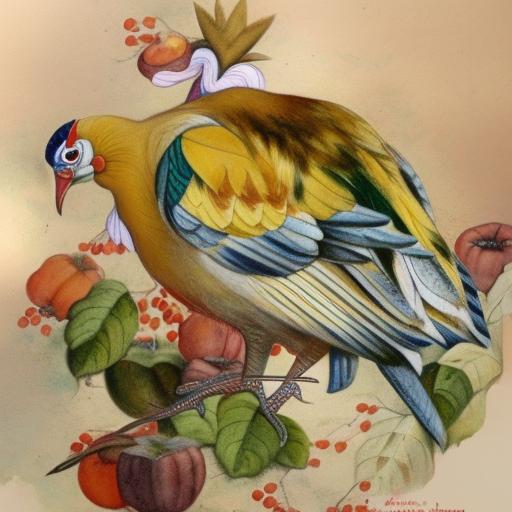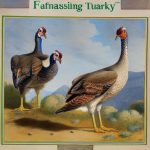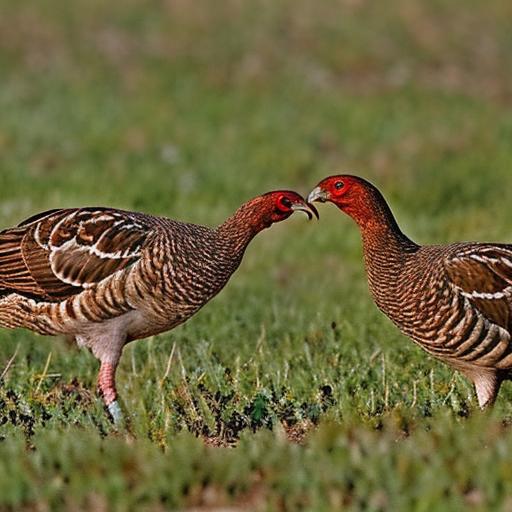Turkey breeds and colors are an important aspect of the poultry industry, with a wide variety of breeds and colors available for farmers and enthusiasts to choose from. Turkey breeds are classified based on their physical characteristics, such as size, shape, and color, while turkey colors refer to the plumage of the birds. Understanding the different breeds and colors of turkeys is essential for anyone looking to raise or breed these birds, as it can have a significant impact on their productivity, appearance, and overall value.
Key Takeaways
- Turkey breeds and colors come in a wide variety, each with its own unique characteristics and traits.
- Differentiating between turkey breeds and colors can be challenging, but understanding the differences is important for breeders and enthusiasts.
- Understanding turkey breeds involves learning about their history, physical attributes, and behavioral traits.
- Exploring turkey colors reveals a range of hues and patterns, from traditional bronze to rare lavender and blue varieties.
- The significance of turkey breeds and colors lies in their cultural, historical, and economic importance, as well as their role in biodiversity and conservation efforts.
Differentiating Between Turkey Breeds and Colors
When it comes to turkey breeds, there are several distinct varieties to choose from, each with its own unique characteristics. Some of the most popular turkey breeds include the Broad Breasted White, Bourbon Red, Narragansett, and Royal Palm. These breeds vary in size, weight, and growth rate, making them suitable for different purposes such as meat production or exhibition. On the other hand, turkey colors refer to the plumage of the birds, which can range from solid white or black to a combination of bronze, copper, and gold. Understanding the differences between turkey breeds and colors is essential for selecting the right birds for specific purposes, whether it’s for commercial production or as pets.
Understanding Turkey Breeds
Turkey breeds are classified based on their physical characteristics, including size, shape, and growth rate. For example, the Broad Breasted White is one of the most popular turkey breeds for commercial meat production due to its fast growth rate and large size. On the other hand, the Bourbon Red is known for its beautiful mahogany-red plumage and is often raised for exhibition or as a backyard pet. Understanding the unique traits and characteristics of each turkey breed is essential for selecting the right birds for specific purposes. Additionally, some turkey breeds are better suited for free-range or pasture-raised systems, while others thrive in confinement or intensive production systems. By understanding the specific needs and requirements of each breed, farmers and enthusiasts can ensure the health and well-being of their turkeys.
When it comes to breeding turkeys, it’s important to consider the genetic traits and characteristics of different breeds in order to achieve specific goals. For example, if the goal is to produce turkeys with a certain color pattern or plumage, it’s essential to select breeding stock with those desired traits. Additionally, some turkey breeds are known for their superior meat quality or egg production, making them ideal choices for specific breeding programs. By understanding the unique traits and characteristics of different turkey breeds, breeders can make informed decisions when selecting breeding stock and developing breeding programs to achieve their desired outcomes.
Exploring Turkey Colors
Turkey colors refer to the plumage of the birds, which can vary widely depending on the breed and genetic makeup. Some of the most common turkey colors include solid white, black, bronze, and copper, as well as a variety of patterns and combinations such as mottled or barred. The color of a turkey’s plumage can have a significant impact on its appearance and market value, especially in exhibition or show settings where birds are judged based on their color patterns and overall appearance. Additionally, certain turkey colors may be preferred by consumers or have cultural significance in different regions or markets. Understanding the different turkey colors and their significance is essential for breeders and enthusiasts looking to raise or exhibit these birds.
In addition to their aesthetic appeal, turkey colors can also have practical implications for farmers and breeders. For example, certain color patterns may provide camouflage or protection from predators in a free-range or pasture-raised setting. Additionally, some turkey colors may be more resistant to sunburn or heat stress, making them better suited for outdoor production systems in hot climates. By understanding the practical implications of different turkey colors, farmers and breeders can make informed decisions when selecting breeding stock and managing their flocks.
The Significance of Turkey Breeds and Colors
The significance of turkey breeds and colors extends beyond their physical appearance and market value. Different breeds and colors of turkeys have unique traits and characteristics that make them suitable for specific purposes such as meat production, egg production, exhibition, or as pets. Additionally, preserving and promoting diverse turkey breeds and colors is important for maintaining genetic diversity within the poultry industry. This genetic diversity can be valuable for breeding programs aimed at improving disease resistance, productivity, and overall sustainability of turkey production systems.
Furthermore, turkey breeds and colors can also have cultural significance in different regions or communities. For example, certain turkey breeds or colors may be associated with traditional festivals or celebrations, making them an important part of cultural heritage. By understanding the significance of turkey breeds and colors, farmers and enthusiasts can contribute to the preservation and promotion of diverse poultry genetics and cultural traditions.
Breeding and Selecting Turkeys for Specific Traits

Breeding and selecting turkeys for specific traits requires a deep understanding of genetics, breeding principles, and the unique characteristics of different turkey breeds and colors. When developing breeding programs, it’s important to establish clear breeding goals and objectives based on the desired traits such as size, growth rate, meat quality, egg production, or specific color patterns. Selecting breeding stock with superior traits and genetic potential is essential for achieving these goals and improving the overall quality of the flock.
In addition to genetic traits, it’s also important to consider other factors such as health, temperament, and adaptability when selecting breeding stock. By carefully evaluating these factors in conjunction with desired traits, breeders can develop breeding programs that produce turkeys with superior genetics and overall performance. Furthermore, implementing sound breeding practices such as proper record-keeping, genetic testing, and selection criteria is essential for maintaining genetic diversity and improving the overall quality of turkey breeds and colors.
Appreciating the Diversity of Turkey Breeds and Colors
In conclusion, turkey breeds and colors play a significant role in the poultry industry, with diverse varieties available for different purposes such as meat production, egg production, exhibition, or as pets. Understanding the unique traits and characteristics of different turkey breeds is essential for selecting the right birds for specific purposes and developing breeding programs aimed at achieving specific goals. Similarly, appreciating the wide range of turkey colors and their significance is important for breeders and enthusiasts looking to raise or exhibit these birds.
Preserving genetic diversity within turkey breeds and promoting diverse color patterns is essential for maintaining sustainable poultry production systems and cultural heritage. By understanding the significance of turkey breeds and colors, farmers and enthusiasts can contribute to the preservation and promotion of diverse poultry genetics and cultural traditions while also improving the overall quality of turkey production. Ultimately, appreciating the diversity of turkey breeds and colors is essential for ensuring the long-term sustainability and success of the poultry industry.
If you’re interested in learning more about turkey breeds and colors, you might also want to check out this informative article on mating season for turkeys. Understanding the mating season can provide valuable insights into the breeding and genetics of different turkey varieties.
FAQs
What are the different breeds of turkeys?
There are several different breeds of turkeys, including the Broad Breasted White, Broad Breasted Bronze, Bourbon Red, Narragansett, and Royal Palm, among others.
What are the differences between turkey breeds?
The different turkey breeds vary in size, color, and temperament. Some breeds are known for their larger size and faster growth, while others are prized for their unique color patterns and plumage.
Are turkey breeds the same as turkey colors?
No, turkey breeds refer to the specific genetic lineage and characteristics of a group of turkeys, while turkey colors refer to the variations in plumage and skin color within a breed.
What are the most common turkey colors?
The most common turkey colors include white, bronze, black, and various shades of brown. Some turkeys also have unique color patterns, such as speckled or mottled feathers.
Can turkeys of different breeds interbreed?
Yes, turkeys of different breeds can interbreed, but the resulting offspring may not exhibit the same characteristics as either parent breed. This can lead to a wide variety of color and size variations in mixed-breed turkeys.
Meet Walter, the feathered-friend fanatic of Florida! Nestled in the sunshine state, Walter struts through life with his feathered companions, clucking his way to happiness. With a coop that’s fancier than a five-star hotel, he’s the Don Juan of the chicken world. When he’s not teaching his hens to do the cha-cha, you’ll find him in a heated debate with his prized rooster, Sir Clucks-a-Lot. Walter’s poultry passion is no yolk; he’s the sunny-side-up guy you never knew you needed in your flock of friends!







